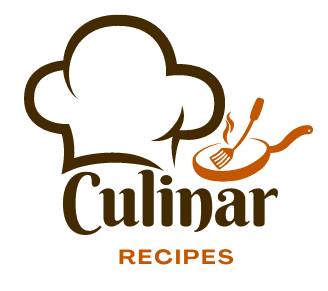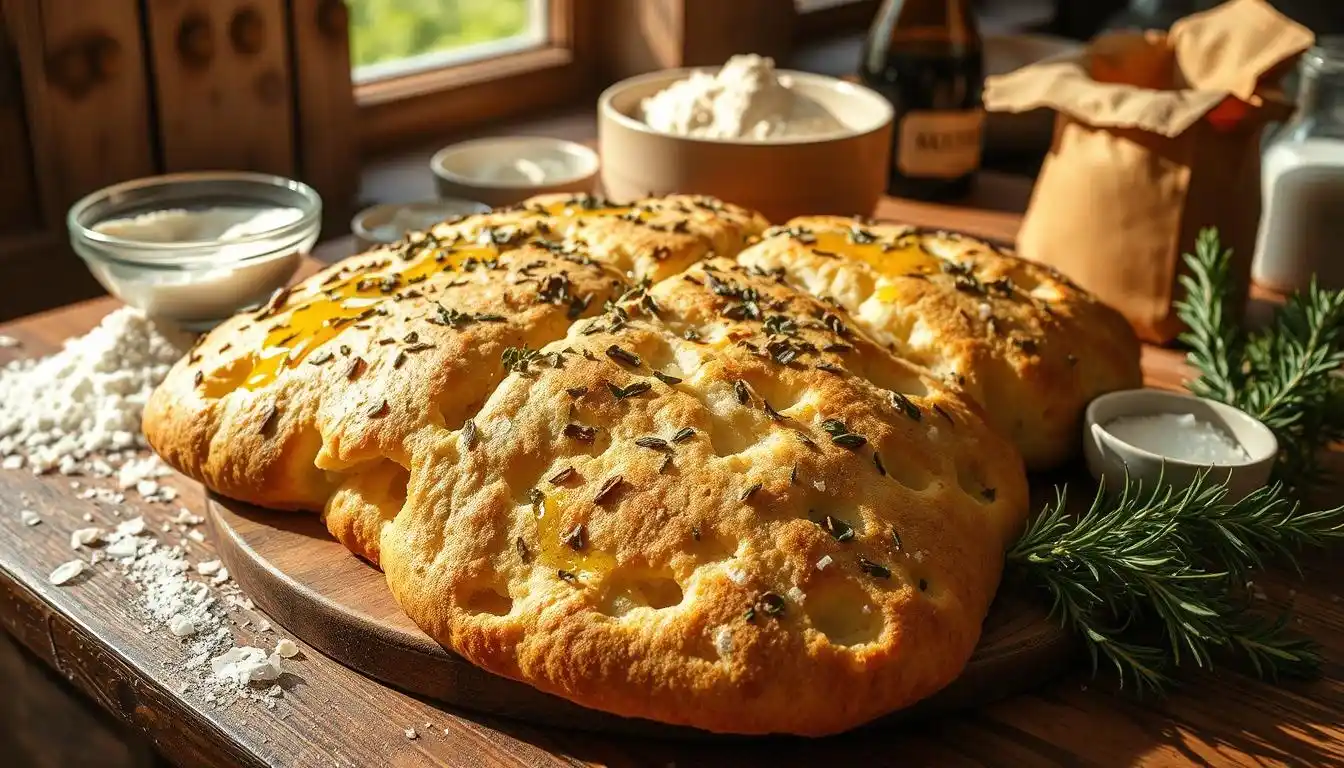The scent of freshly baked bread is magical. Making sourdough focaccia bread changed my home baking. It’s not just about mixing ingredients. It’s about making memories and connecting with tradition.
Starting your homemade sourdough focaccia journey here is exciting. This recipe is perfect for beginners or those looking to improve their baking skills. You’ll learn to make a delicious Italian flatbread that’s crispy outside and soft inside.
Baking bread might seem hard, but it’s not. With the right techniques and patience, anyone can do it. This guide will help you through each step, making your sourdough focaccia adventure fun and successful.
Table of Contents
Understanding Sourdough Focaccia: The Perfect Italian Flatbread
Explore the world of artisan sourdough bread and discover focaccia, a favorite Italian flatbread. It combines ancient traditions with modern baking. This bread is loved by food enthusiasts everywhere.
Origins of Focaccia Bread
Focaccia has deep roots in Italian cooking history. It started in ancient Rome and has changed over time. The name focus comes from Latin, meaning hearth, showing its traditional baking.
- Ancient Roman soldiers used focaccia as a staple food
- Variations exist across different Italian regions
- Traditionally baked in wood-fired ovens
Why Choose Sourdough for Focaccia
Using sourdough starter makes focaccia healthier and tastier. The fermentation process breaks down gluten. This makes the bread easier to digest and adds to its flavor.
| Sourdough Benefit | Impact on Focaccia |
|---|---|
| Natural Fermentation | Improved Digestibility |
| Flavor Development | Richer Taste Profile |
| Nutrient Availability | Enhanced Nutritional Value |
Benefits of Making Homemade Focaccia
Making focaccia at home lets you choose your ingredients. This way, you can make a truly authentic focaccia. Homemade focaccia is fresher and more satisfying to make.
“Baking focaccia is more than a recipe—it’s a connection to centuries of culinary tradition.” – Italian Baking Master
- Complete ingredient control
- Fresh, preservative-free bread
- Customizable toppings and flavors
- Therapeutic baking experience
Essential Tools and Equipment for Baking Success
Making delicious sourdough focaccia needs more than skill. You also need the right tools for baking. Both professional bakers and home cooks know that good sourdough bread equipment is key.
Here are the essential tools you’ll need in your kitchen for focaccia:
- Large Mixing Bowls: Ceramic or stainless steel bowls for mixing and fermenting dough
- Baking Sheet or Cast Iron Skillet: Provides even heat distribution for crispy crust
- Digital Kitchen Scale: Precise measurements are crucial for sourdough bread equipment
- Dough Scraper: Helps handle sticky sourdough dough with ease
- Proofing Basket or Container: Supports proper dough rising
“The right tools transform home baking from challenging to enjoyable.” – Professional Baker’s Wisdom
You don’t have to spend a lot on quality baking tools for focaccia. Start with the basics and add more as you get better. A good instant-read thermometer and parchment paper can also help.
Each tool has a special role in making your focaccia perfect. Your equipment is your partner in creating delicious dishes.
Ingredients Overview: What You’ll Need for Perfect Focaccia
Making a tasty sourdough focaccia begins with the right ingredients. The quality of your focaccia depends on choosing the best parts. These components come together to make a delicious Italian flatbread.
To make the perfect sourdough focaccia, pick each ingredient carefully. Your bread-making journey starts with the right choices.
Flour Selection and Quality
The base of a great focaccia is the flour. Look for these top flours for the best focaccia:
- High-protein bread flour (12-14% protein content)
- Tipo 00 Italian flour for authentic texture
- Organic unbleached all-purpose flour
Pro tip: Freshly milled flour can make your sourdough focaccia taste like it’s from a bakery.
Salt and Water Ratios
| Ingredient | Recommended Quantity | Purpose |
|---|---|---|
| Sea Salt | 2% of flour weight | Enhances flavor |
| Water | 70-75% hydration | Creates soft, airy texture |
Optional Toppings and Additions
Add something special to your sourdough focaccia with these toppings:
- Fresh rosemary and coarse sea salt
- Caramelized onions
- Roasted cherry tomatoes
- Olives and herbs
- Garlic and parmesan
“The magic of focaccia lies not just in its ingredients, but in the love you pour into each step of preparation.” – Italian Baking Tradition
Maintaining Your Sourdough Starter
Keeping your sourdough starter healthy is key to making tasty bread and cutting down on waste. It’s a living mix of wild yeasts and good bacteria. It needs regular care and attention.
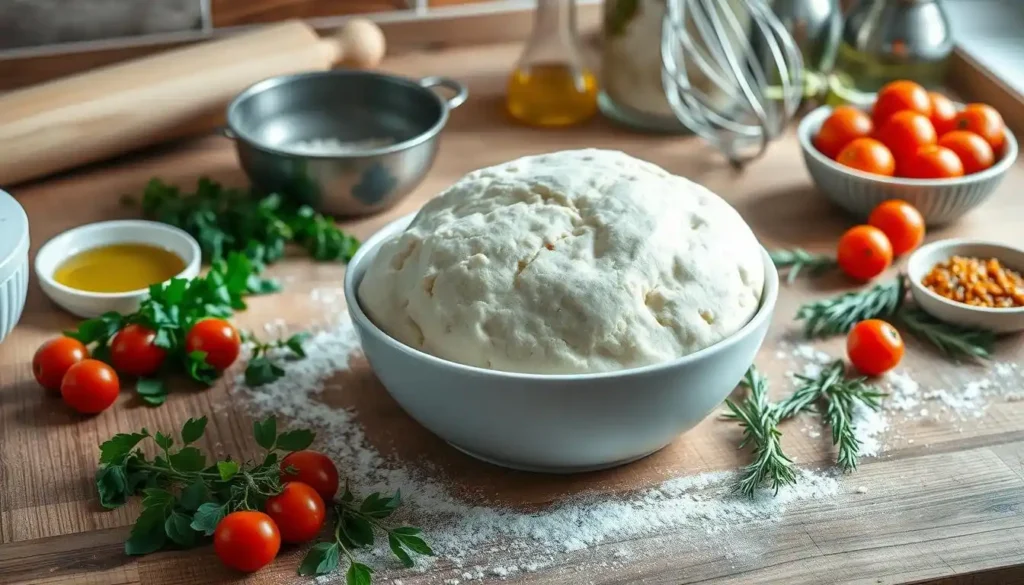
To keep your starter in top shape, follow a regular feeding routine. Bakers suggest a few important steps:
- Feed your starter at the same time each day
- Use consistent flour and water ratios
- Maintain room temperature between 70-80°F
- Store in a clean glass or ceramic container
Using a sourdough discard focaccia recipe is a great way to avoid waste. When you take out extra starter, use it for focaccia, pancakes, or crackers.
| Starter Maintenance Step | Frequency | Purpose |
|---|---|---|
| Daily Feeding | Once per day | Maintain starter strength |
| Discard Portion | Before each feeding | Control starter volume |
| Room Temperature Storage | Daily use | Keep starter active |
| Refrigeration | Weekly, if not baking | Slow fermentation |
*”A well-maintained sourdough starter is the secret to incredible homemade bread.”* – Professional Baker’s Wisdom
By sticking to these tips, you’ll have a strong, tasty starter. It will make amazing focaccia and other breads.
The Complete Sourdough Focaccia Bread Recipe
Making perfect sourdough focaccia takes patience and care. This guide will help you make a tasty flatbread. It will wow your family and friends.
Mixing and Initial Fermentation
Start by mixing ingredients carefully. Combine your sourdough starter, flour, water, and salt in a big bowl. Aim for a smooth, sticky dough. This dough will have great texture and taste.
- Use room temperature ingredients
- Mix until ingredients are fully incorporated
- Allow initial rest for 30 minutes
Folding Techniques
Folding is key for a light focaccia. During the first rise, do stretch and fold moves every 30 minutes.
- Wet your hand to prevent sticking
- Gently lift and fold the dough over itself
- Rotate the bowl and repeat 4-6 times
Final Proofing Steps
The final proof makes your focaccia special. Put the dough on an oiled baking sheet. Let it rise in a warm spot.
| Proofing Stage | Duration | Key Action |
|---|---|---|
| First Rise | 3-4 hours | Stretch and fold |
| Final Proof | 1-2 hours | Create surface dimples |
“Patience is the secret ingredient in any great sourdough focaccia recipe.” – Artisan Baker’s Wisdom
By following these steps, you’ll make a sourdough focaccia like a pro. It will show off your baking skills and taste like Italy.
Mastering the No-Knead Technique
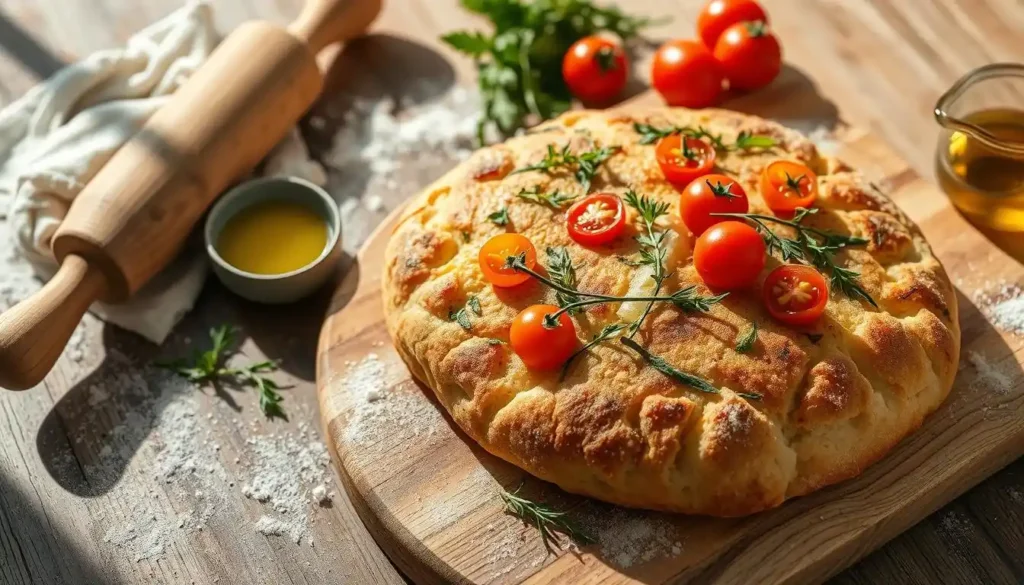
Making easy focaccia doesn’t need hard kneading. The no-knead method makes bread-making simple. It lets you get professional results with little effort.
“Great bread is about technique, not muscle power.”
The no-knead method has three main points:
- Extended fermentation time
- High hydration dough
- Minimal handling
Your focaccia gets gluten from time and moisture. Instead of kneading, you do gentle folds. This builds structure without tiring your arms.
Benefits of the no-knead method include:
- Less physical effort needed
- More consistent bread texture
- Flavors develop better
- Less chance of overworking the dough
Letting the dough rest slowly makes perfect focaccia. It has great air pockets and a soft crumb. The trick is patience and knowing how gluten forms without hard kneading.
“Bread making is an art of waiting and watching.”
Try this easy focaccia recipe technique. You’ll improve your home baking skills with little technical knowledge.
Proper Hydration Levels for Fluffy Texture
To make the perfect fluffy focaccia, knowing about sourdough bread hydration is key. The dough’s moisture affects its texture and taste.
Water is the magic that turns flour into light, airy bread. For fluffy focaccia, focus on your hydration levels.
Understanding Water Content
Hydration in bread making is the water to flour ratio. More water means a softer, fluffier bread. For focaccia, aim for this range:
- Beginner-friendly hydration: 70-75%
- Professional baker’s range: 75-85%
- Extra soft focaccia: 80-85%
Adjusting for Different Climates
Your local weather greatly affects dough hydration. Dry places need more water, while humid ones might need less.
| Climate Type | Hydration Adjustment | Recommended Water % |
|---|---|---|
| Dry Desert Climate | Add 5-10% more water | 80-85% |
| Humid Tropical Climate | Reduce water by 3-5% | 70-75% |
| Moderate Temperate Climate | Standard hydration | 75-80% |
Getting sourdough hydration right takes time. Begin with these tips and tweak as needed for your climate and texture goals.
“The secret to a perfect focaccia lies in understanding how water transforms your dough.” – Artisan Bread Masters
Shaping and Dimpling Your Focaccia
Learning to make focaccia bread means mastering shaping and dimpling. These steps give the bread its unique texture and look.
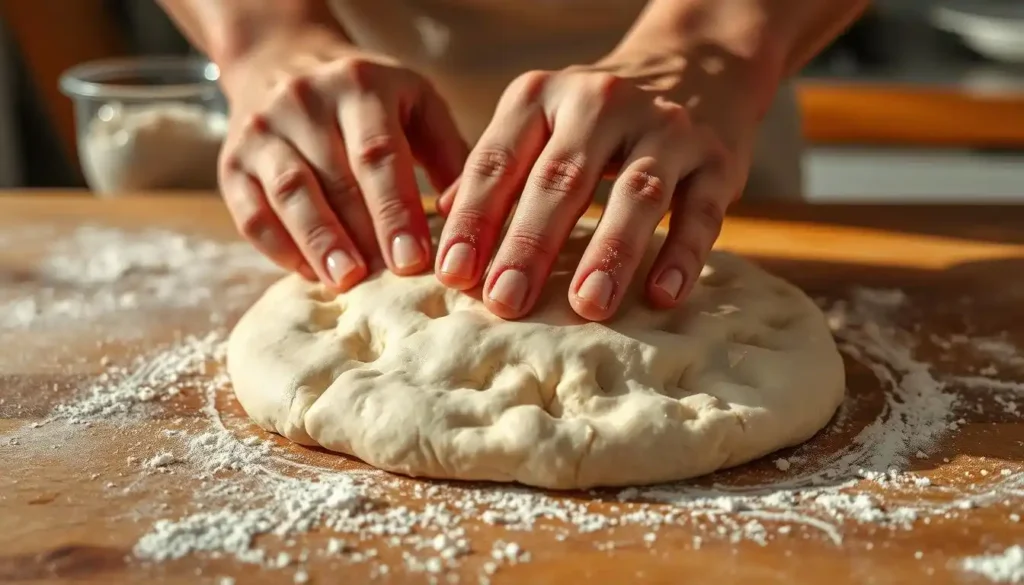
Begin with a dough that’s soft and elastic from good fermentation. Place it on an oiled baking sheet. Stretch it out to fit the sheet without tearing.
- Use your fingertips to create deep, irregular dimples across the entire surface
- Press firmly but gently to create consistent indentations
- Space the dimples about 1-2 inches apart
Dimpling does more than just look good. It traps olive oil, herbs, and toppings. It also makes the bread’s surface interesting.
Pro tip: Wet your fingers slightly before dimpling to prevent sticking and create more defined impressions.
Each dimple should be about half an inch deep. This lets olive oil pool and create crispy, flavorful pockets when baked. The technique turns simple dough into a stunning and tasty bread.
| Dimpling Technique | Key Benefits |
|---|---|
| Finger Pressing | Creates signature texture |
| Oil Pooling | Enhances flavor and crispiness |
| Surface Variation | Improves visual appeal |
Practice makes perfect with the dimpled focaccia technique. Don’t worry if your first attempts aren’t magazine-perfect – each dimple tells a story of your baking journey!
Adding Toppings and Seasonings
To make your sourdough focaccia truly special, choose the right toppings and seasonings. The right toppings turn a simple bread into a feast for the eyes and taste buds.
There are countless ways to top your focaccia. The trick is knowing how toppings work with the bread’s texture and flavor.
Traditional Italian Toppings
Classic toppings for focaccia use simple, high-quality ingredients. They enhance the bread’s rich taste:
- Extra virgin olive oil
- Fresh rosemary sprigs
- Coarse sea salt
- Sliced cherry tomatoes
- Thinly sliced red onions
Creative Modern Variations
Modern toppings mix things up, adding new flavors:
- Caramelized onions with thyme
- Roasted garlic and parmesan
- Sun-dried tomatoes and basil
- Mixed Mediterranean herbs
- Roasted vegetables
“The beauty of focaccia lies in its ability to transform with each unique topping.” – Italian Baking Experts
When adding toppings, press them gently into the dough. This helps them stick during baking. Drizzle with olive oil before baking for extra flavor and a crispy crust.
| Topping Category | Recommended Application Time | Flavor Impact |
|---|---|---|
| Herbs | Before baking | Intense, aromatic |
| Vegetables | Before final proof | Soft, integrated |
| Cheese | Last 5 minutes of baking | Melted, rich |
Try different toppings to find your favorite focaccia recipe!
Baking Temperature and Timing Guidelines
To get the perfect focaccia crust, you need to be precise with the baking temperature. Professional bakers say that controlling the temperature is key. It makes the crust crispy and the inside soft and airy.
The best baking temperature for focaccia is between 425°F and 450°F. This range helps create a golden, crispy crust. It also keeps the bread’s soft, tender crumb.
- Preheat your oven for at least 30 minutes before baking
- Use a heavy-duty baking sheet or pizza stone for even heat distribution
- Check your focaccia after 18-22 minutes of baking
“Temperature is the baker’s most powerful tool in creating texture and flavor.” – Artisan Bread Masters
Here are some pro tips for a perfect focaccia crust:
- Place your baking sheet on the middle oven rack
- Rotate the pan halfway through baking for uniform browning
- Look for a deep golden color as your doneness indicator
Keep an eye on your focaccia in the last few minutes of baking. The difference between a good and great focaccia is in the temperature and timing.
Troubleshooting Common Focaccia Problems
Baking sourdough focaccia can be tricky, but knowing common issues helps. It makes perfect bread every time. Fixing dense focaccia and overproofed sourdough focaccia boosts your baking skills.
If your focaccia doesn’t turn out right, don’t worry. Most baking problems have simple fixes. These can make your next batch better.
Understanding Proofing Challenges
Proofing is key for light, airy focaccia. Here are signs of proofing problems:
- Underproofed dough feels tight and doesn’t stretch easily
- Overproofed sourdough focaccia looks flat and lacks volume
- Dense texture suggests insufficient fermentation
Resolving Dense Focaccia Texture
To fix dense focaccia, pay attention to a few things:
- Check your starter’s activity level
- Ensure proper hydration of the dough
- Allow sufficient fermentation time
- Maintain consistent room temperature
“Perfect focaccia is about patience and understanding your dough’s unique characteristics.” – Professional Baker
By following these tips, you’ll make delicious, light sourdough focaccia. It will impress everyone at the table.
Storage and Reheating Tips
Keeping your sourdough focaccia fresh is key. Let it cool down completely after baking. Then, you can start thinking about how to store it.
For a short time, wrap your focaccia in plastic wrap or use an airtight container. It stays fresh at room temperature for 1-2 days. For longer, the fridge can keep it good for 4-5 days.
- Room temperature storage: 1-2 days
- Refrigerator storage: 4-5 days
- Freezer storage: Up to 3 months
Reheating your focaccia right is important. Microwaving can make it tough and chewy. Instead, try these methods.
Here are some ways to reheat your focaccia:
- Oven method: Preheat to 350°F, wrap focaccia in aluminum foil, and warm for 5-7 minutes
- Toaster oven: Heat at 325°F for 3-5 minutes until warm and crisp
- Skillet method: Warm briefly on medium-low heat with a lid
“The secret to great focaccia is not just in the baking, but in how you store and reheat it.” – Artisan Baker’s Wisdom
Freezing is great for longer storage. Wrap your focaccia in plastic wrap, then foil. To eat, thaw at room temperature and reheat in the oven for the best taste.
Variations and Creative Recipe Adaptations
Exploring sourdough focaccia variations opens up a world of culinary creativity. Your basic focaccia recipe can transform into countless exciting versions. These versions will surprise and delight your taste buds.
When experimenting with creative focaccia recipes, consider these delightful approaches:
- Swap traditional white flour with alternative grain flours like:
- Whole wheat
- Rye
- Spelt
- Einkorn
- Incorporate unique flavor combinations such as:
- Rosemary and sea salt
- Caramelized onion and thyme
- Roasted garlic and parmesan
- Sun-dried tomato and basil
Pro tip: Don’t be afraid to get creative with your sourdough focaccia variations!
“Cooking is an art, and focaccia is your canvas.” – Artisan Baker
| Flour Type | Flavor Profile | Best Toppings |
|---|---|---|
| Whole Wheat | Nutty, robust | Olives, rosemary |
| Rye | Earthy, tangy | Caraway seeds, dill |
| Spelt | Mild, slightly sweet | Herbs de Provence |
Your sourdough focaccia journey is limited only by your imagination. Each variation brings unique textures and flavors to your bread. This makes every bake an exciting culinary adventure.
Conclusion
Making homemade sourdough focaccia is a fun journey. It turns simple ingredients into a tasty masterpiece. You’ll learn new skills, be patient, and get creative in the kitchen.
Every loaf of sourdough focaccia shows your skill and love for baking. You can use traditional Italian toppings or try new flavors. Remember, every time you bake, you learn and get better.
Keep trying new things and trust your baking skills. With each batch, you’ll get closer to making focaccia like a pro. Start with simple recipes, stay curious, and enjoy the process of learning.
Your homemade sourdough focaccia is more than just a recipe. It’s a celebration of tradition, skill, and your growth as a cook. Enjoy the journey, savor each bite, and share your creations with others.
